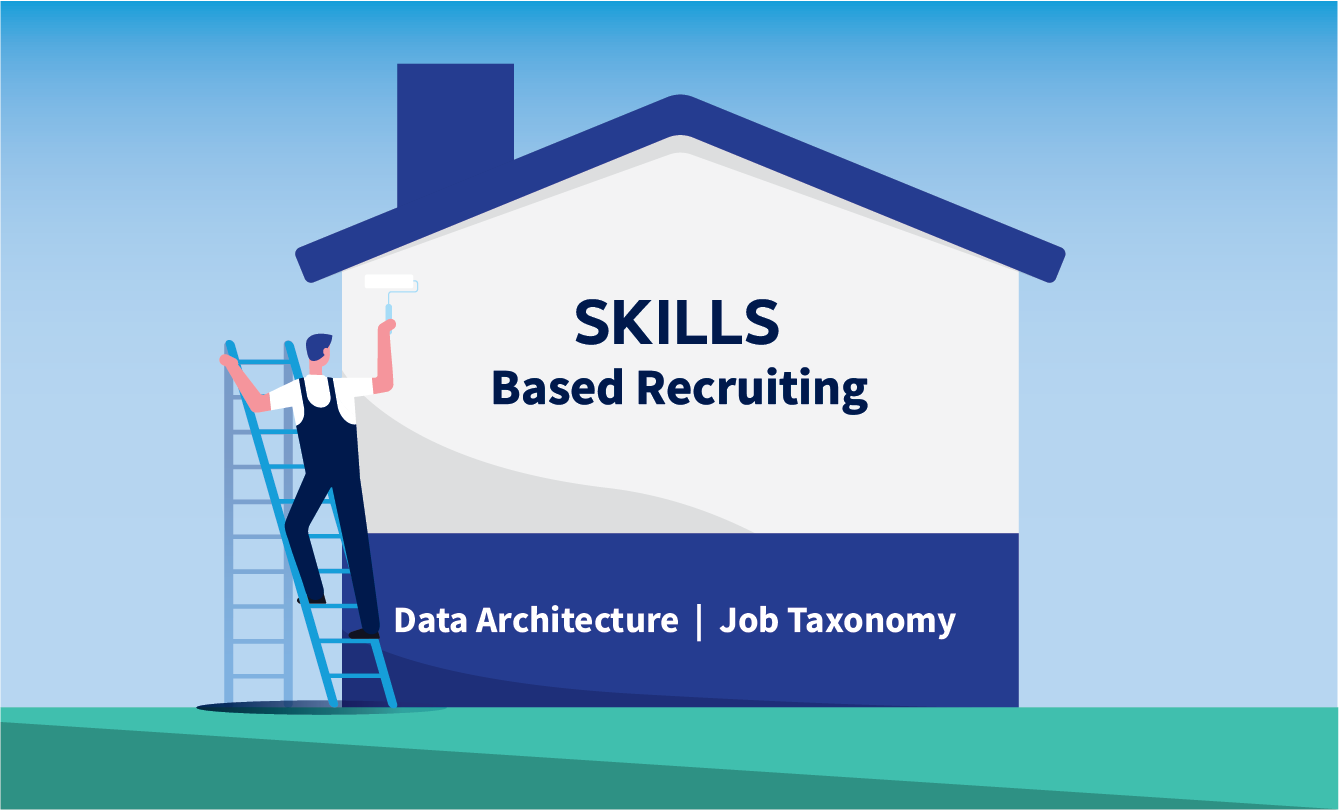In today's dynamic job market, the transition to skills-based hiring is gaining momentum. This approach focuses on evaluating candidates based on specific skills rather than traditional factors like education and work history.
However, as HR professionals, it's essential to recognize that skills-based recruitment can only reach its full potential when built upon a solid job title taxonomy.
The Missing Link: Job Taxonomy
A job taxonomy or job architecture is like the foundation of a house – essential for stability and structure. It's a framework that classifies jobs based on a variety of factors and needs. Think of it as a common language that allows everyone in your organization to clearly understand the definition of roles and their place in the bigger picture..
This is an important start because if we don’t have agreed-upon language to talk about the hierarchies of roles, even your most basic reporting fails. Without a clean job taxonomy, you could easily find yourself struggling to report on something as basic as "engineering talent."
In the past, teams might have managed without a perfect job title taxonomy, but those days are long gone. With the growing complexity of the workforce, an increase in HR technologies, and the need for firm foundations for people analytics, a well-structured job taxonomy is now essential.
Addressing the Pitfalls in Skills-Based Approaches
Unfortunately, there seems to be a growing misconception that skills-based hiring methods somehow eliminate the need for clean taxonomy and data architecture. This oversight is akin to skipping your vegetables – it might seem tempting, but it's not sustainable.
This fallacy is based in part on the limitations of current skills-based hiring itself and the need for more case studies in practice. A good starting point includes:
Recognizing the Path
It can be helpful to see skills-based hiring not as the perfect, new, fully-formed solution for workforce management, but as a step in the evolution from education-based and job-title-based approaches. Both of those prior methods were shortcuts that never got granular enough to really capture human capability.
While a skills-based approach is an improvement, it’s still simply a shortcut to understanding human capabilities. Right now, it loosely conveys "we're going to be more careful" in assessing candidates against the actual requirements of the job.
The question is whether organizations have the data architecture to support it. And are they getting the buy-in from other business functions to capture the true value of becoming skills-based?
Improving Our Shared Language
Skills-based hiring isn't just about evaluating skills for individual positions; it's about identifying critical skills that drive business growth and introducing language that clarifies the space. For example, expected skills should align with job profiles, while assessed skills reflect individuals within your company. And it doesn't seem like anyone is even talking about 'potential skills' yet. These distinctions are crucial for clarity.
Balancing Granularity and Hierarchy
Just as we would say "workspace" instead of listing every item on our desk, skills-based hiring requires a balance between granularity and hierarchy. While detail is necessary for technological advancements, we still need the broader terms for everyday conversations about work.
For example, it would be helpful to list all the stuff on and around our desk to an organizational consultant who was helping us tidy up, but "workspace" is sufficient for most conversations.
The same thing applies to skills. In some cases, saying "People Analytics" skills is more practical than listing specific roles like data analysis, storytelling, data engineering, consulting, or research. But in others, it could cause confusion to try to have a discussion at that level.
We need that granularity of an individual skill to enable tech advances (e.g. talent marketplaces, job matching, talent assessments). But we still need the hierarchy and rollups of the skills into roles and job families to continue our day to day conversations about workforces. Both are required to make skill conversations meaningful.
Think of Job Taxonomy as a Verb
It can’t be overstated that job taxonomy isn't a one-and-done task; it's a living entity that evolves with your organization and pays out dividends over time. It should perhaps be thought of as an ongoing verb, not a one-time noun.
And a clean taxonomy’s pivotal role in various HR functions – from workforce planning and compensation analysis to talent acquisition and learning and development – highlights even further how important it is.
Unfortunately, its initial price tag can appear high enough that some teams have trouble forecasting the benefit. Job title taxonomy is tied into so many projects, though, that it's a must-have as soon as you can get it. Without solid taxonomy, integrating skills in particular into the recruitment process becomes a daunting or impossible task.
For now, starting with static expected skills for current jobs, updated quarterly or even annually, would be a massive first step from a profile-based view of the world and unlock a lot of new opportunities. It's good to start small in this space.
The Starting Point: Standardized Job Taxonomy
In the meantime, perhaps we can somehow translate the fervor around skills-based hiring into conversations about meaningful data architecture and data engineering funding. While not as glamorous, data standardization is an indispensable foundation for the success of skills-based recruitment, the glue that holds it together.
One Model helps by helping you set up a true people data platform that is customizable and transparent.



 Learn how to build a people data platform that will allow you to do better skills-based hiring.
Learn how to build a people data platform that will allow you to do better skills-based hiring.